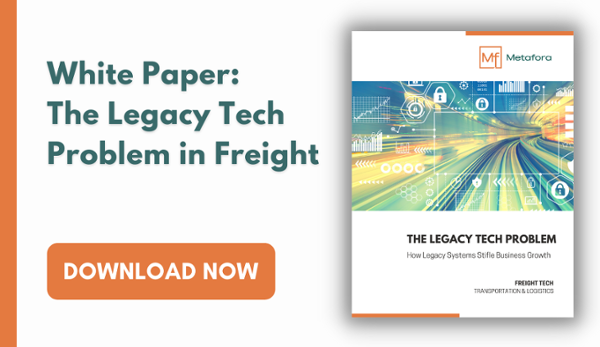Your enterprise architecture has been built inorganically through mergers and acquisitions, your engineering teams are swamped trying to keep everything running smoothly, and your customers are furious because you’re not serving them.
What do you do?
How do you turn this around so that you increase engineering throughput, improve customer satisfaction and build an enterprise architecture that is nimble and can react rapidly to changing customer and market needs?
It’s time to start down the technology strategy road. You need a vision and a roadmap stat and the first step towards building a proper transformative technology roadmap is to audit the current situation. This includes some common sense inventory activities and some not so obvious activities that will help you get a clear picture of what you have today and the best path forward towards the future.
Step One: The application audit
Probably the simplest activity of the set, the application audit is an inventory of every software application you use within your organization to provide customer value. Typically done with a spreadsheet and some diagramming software you’ll need to create a list of every application and then illustrate the integrations and data flows including databases and integrations. The illustration below is an example of a diagramming approach. Don’t be surprised if yours looks nothing like a Star Schema Architecture. The point here is to understand the integrations and relationships between the applications and supporting infrastructure so you can begin to understand where and how you need to transform your architecture.

Step Two: The freight business process audit
You’ve completed Step One and have your architecture diagram and software inventory. You’re seeing redundancies (do we really use three visibility providers?), and point-to-point integrations that connect the applications like the string diagram in A Beautiful Mind. This is a good sign, and you’re well on your way.
The next step is to understand your business processes.
A business process is a collection of linked tasks that result in the delivery of a service or product to a client. A business process is also a set of activities and tasks that, once completed, accomplish an organizational goal. The process must involve clearly defined inputs and a single output. These inputs are made up of all of the factors which contribute (either directly or indirectly) to the added value of a service or product. These factors can be categorized into management processes, operational processes and supporting business processes. Wikipedia has a great jumping off point here if you want to learn more.
The goal is to assess and document the processes that define your business. To understand which processes are differentiating (i.e. done by none of your competitors and seen as a competitive advantage) and which processes are non-differentiating. These inputs feed directly into your buy-versus-build assessment that we’ll talk about in a later blog post. The last step to the business process audit is establishing relative value for each process. Approaches here can vary but the basic idea is to force rank your processes by how much value they deliver to the customer and the organization. This will serve as a valuable prioritization tool as you roadmap out your transformation.
Step Three: The user workflow audit
The last step in this enterprise organizational spelunking exercise is to catalog your workflows. Wikipedia defines workflows as “Workflow is the procedural movement of information, material, and tasks from one participant to another. Workflow includes the procedures, people and tools involved in each step of a business process. A single workflow may either be sequential, with each step contingent upon completion of the previous one, or parallel, with multiple steps occurring simultaneously. Multiple combinations of single workflows may be connected to achieve a resulting overall process.”
The short version is these are a subset of your business processes with emphasis on the actor (or user) and how each workflow is completed. Begin by cataloging your user roles. You have load planners, driver representatives, accountants and probably much more. Look at your organizational chart and use roles as your guide. For extra credit you can force-rank your roles by customer value. While all are important, account managers are a direct interface with the customer and directly responsible for their satisfaction, they rank higher than executives for example. I mean, we all need executives, but the goal here, when we get to planning, is to first improve the workflows that directly impact customer value before you improve an executive's processes.
Once you’ve captured your exhaustive list of roles and ranked them, the next step is to audit a day in their life. Document the workflows they use to serve customers. Book a load, hire a driver, maintain a vehicle are all examples that might be on your list. This list also should be ranked by customer value. For example, excellent customer service is likely more important for customers than requisitioning supplies.
Summing it up
The goal of this post is to help illustrate the data collection activities required to build a proper technology strategy and roadmap. There are complexities not described in this article, for example SOCs compliance or governance and standardization activities. The work has only just begun and in future blog posts we will describe prioritization processes, architectural design principles and infrastructure best practices.
Would you like to learn more? Click here to set up a free discovery session, and learn more about how Metafora can help you with your technology transformation.






